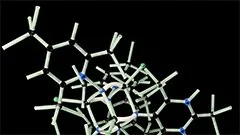Introduction
This comprehensive and academically structured course is designed for advanced level students studying Embryology or the Biology of Development, focusing on the subject of "Sexual Reproduction: Gametogenesis." The following content will provide a thorough exploration of the important concepts related to this topic.
Definition and Importance of Gametogenesis
Gametogenesis refers to the process by which diploid germ cells (gametes) are produced through meiosis in sexually reproducing organisms. This process is critical for sexual reproduction, as it results in the generation of genetically diverse offspring that can contribute to the genetic variability and evolutionary potential of a species.
Overview of Sexual Reproduction
Sexual reproduction involves the fusion of gametes (spermatozoa or ova) from two individuals, leading to the formation of a zygote. In sexually reproducing organisms, the two types of gametes are typically produced by differentiated germ cells, which undergo meiosis to generate haploid gametes. This process ensures that each offspring receives half the number of chromosomes compared to its diploid parent(s).
Meiosis: An Overview
Meiosis is a specialized form of cell division that results in the production of four haploid daughter cells from a single diploid parent cell. This process consists of two successive rounds of nuclear division, each followed by cell division (cytokinesis), resulting in the formation of four genetically distinct daughter cells.
Meiosis I: Prophase, Metaphase, and Anaphase
Prophase I
Prophase I is the longest phase of meiosis I and is characterized by a series of events including chromosome condensation, synapsis, recombination, and the formation of chiasmata. During this stage, homologous chromosomes pair up and exchange genetic material through crossing over, which contributes to the genetic diversity of the resulting gametes.
Metaphase I
In metaphase I, the paired chromatids align along the equatorial plane of the spindle fiber-organized cell. The spindle fibers attach to the centromeres of each chromosome and facilitate the separation of homologous chromosomes during anaphase I.
Anaphase I
Anaphase I is initiated by the separation of homologous chromatids, which migrate towards opposite poles of the cell. This results in the formation of two daughter cells, each containing one set of homologous chromosomes (one member from each pair).
Meiosis II: Prophase, Metaphase, and Anaphase
Prophase II
Prophase II is a brief phase during which the chromatin decondenses, and the spindle apparatus reforms in preparation for the second round of nuclear division.
Metaphase II
During metaphase II, each daughter nucleus aligns along the equatorial plane of the cell, ensuring that sister chromatids remain associated with one another. The spindle fibers attach to the centromeres of each chromosome, preparing for their separation during anaphase II.
Anaphase II
Anaphase II is initiated by the separation of sister chromatids, which migrate towards opposite poles of the cell. This results in the formation of four haploid daughter cells, each containing a unique set of chromosomes.
Regulation and Control of Gametogenesis
Gametogenesis is subject to various regulatory mechanisms that ensure the proper timing and execution of this process. These mechanisms include hormonal signaling, gene regulation, and cell-cell interactions. A detailed understanding of these control mechanisms is essential for comprehending the complex interplay between gametogenesis and the broader context of sexual reproduction in different organisms.
Sexual Reproduction in Different Organisms
Sexual reproduction takes various forms across the animal kingdom, with different strategies for generating genetic diversity through gametogenesis. This section will provide an overview of gametogenesis in a selection of representative organisms, highlighting the unique characteristics and adaptations that have evolved to optimize this process within each species.
Conclusion
Understanding gametogenesis is crucial for gaining insights into the fundamental principles of sexual reproduction and its role in shaping the genetic diversity and evolutionary potential of various organisms. By exploring the intricacies of meiosis and the regulatory mechanisms that control this process, we can develop a comprehensive appreciation for the complexities involved in generating genetically distinct offspring through gamete production.
MCQ: Test your knowledge!
Do you think you know everything about this course? Don't fall into the traps, train with MCQs! eBiologie has hundreds of questions to help you master this subject.
These courses might interest you
Create a free account to receive courses, MCQs, and advice to succeed in your studies!
eBiologie offers several eBooks containing MCQ series (5 booklets available free for each subscriber).



